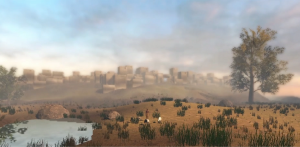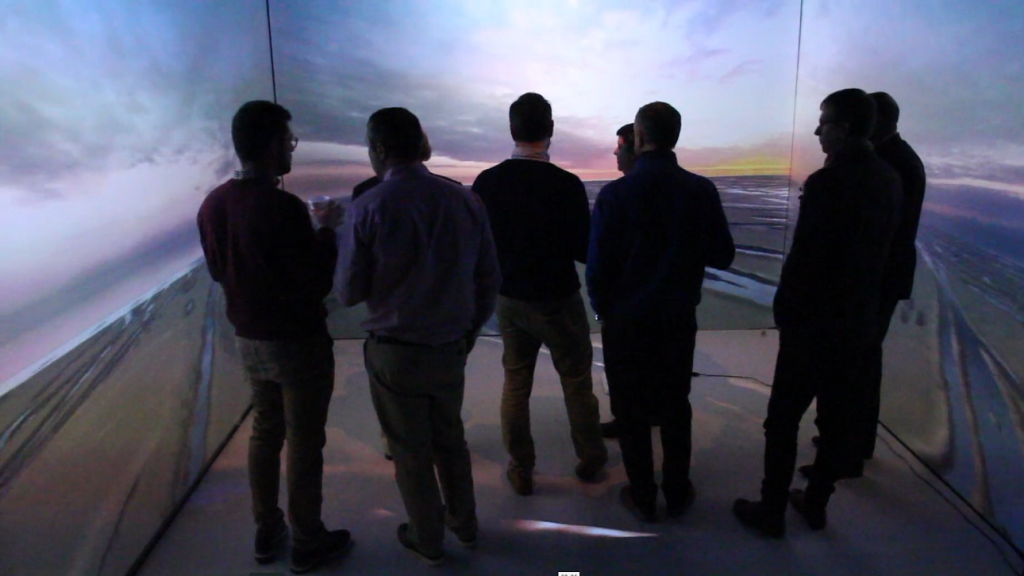“The past is never dead, it’s not even past”
William Faulkner
We used to rely on textual artifacts to tell us all we knew about the past. But these records – whether a formal chronicle of events or an ancient grocery list – are rare and even when they are complete and legible, they still cannot provide the full picture. Archaeologists have shown there are layers of human history that go beyond the written record and are essential to fathoming the lives and societies of our ancestors. These experts carefully excavate ruins to slowly piece together a clearer vision of daily life in times past. But how can we know whether or not their reconstructions are correct? And how can the rest of us see what they see?
Approach
 Visualizing the Deep Past brings together the digital humanities, philosophy, and computer engineering to create virtual spaces that enable anyone to experience the lost worlds of the past. It draws on the field of 3D archaeology to build immersive and dynamic virtual-reality environments from the vast and intricate databases compiled by hard-working archaeologists.
Visualizing the Deep Past brings together the digital humanities, philosophy, and computer engineering to create virtual spaces that enable anyone to experience the lost worlds of the past. It draws on the field of 3D archaeology to build immersive and dynamic virtual-reality environments from the vast and intricate databases compiled by hard-working archaeologists.
The VDP team, from the Center for Mind and Culture (CMAC) and the Virginia Modeling, Analysis, and Simulation Center (VMASC), have begun by building a 3D simulation of Çatalhöyük, a World Heritage site in southern Turkey. Çatalhöyük is one of the oldest settled communities ever excavated, dating back some nine thousand years and providing a window into the transition from hunter-gatherer lifestyles to towns with domesticated plants and animals.
With the touch of a button, users can go back in time to when this was a bustling farming community and roam through houses, neighborhoods, and the surrounding landscape. They can practice being a Neolithic farmer and look for animals or engage with the livestock. They can put their interior decorating skills to the test if they go inside settlement homes, modifying the placement of doors, windows, or wall paintings. They can even adjust the height or size of the rooms, and see how this affects the environment or capacity of the home.
This virtual world thus not only stimulates and concretizes our imagination of the deep past, but also challenges users to take on the mindset of an archaeologist, to make intelligent guesses and think through the consequences of their assumptions.
Impact
 The Çatalhöyük use case exemplifies the potential of visualization for increasing access to and understanding of complex datasets. Rather than sifting through mounds of data or obscure texts, mentally piecing a thousand details together like a jigsaw, people can delve into the deep past as if it was in their own backyard, using sight and sound, and other senses, too.
The Çatalhöyük use case exemplifies the potential of visualization for increasing access to and understanding of complex datasets. Rather than sifting through mounds of data or obscure texts, mentally piecing a thousand details together like a jigsaw, people can delve into the deep past as if it was in their own backyard, using sight and sound, and other senses, too.
CMAC and VMASC plan to expand access to our Çatalhöyük virtual-reality world across a variety of venues and platforms, creating opportunities for museums, classrooms, and anyone who might be interested to experience Çatalhöyük for themselves. As a learning tool, Çatalhöyük enables teachers not only to convey what the ancient human world might have looked like, but also to empower their students to think critically about the relationship between assumptions and reality, and to view history with discerning eyes.
Publications
Shults and Wildman, “Modeling Çatalhöyük: Simulating religious entanglement in a Neolithic town,” in Ian Hodder, ed., Religion, History and Place. Denver: University of Colorado Press, 2018.

